Tamil Nadu is the land of the Tamils and it has a history that dates back to a several thousand years. It is a land where traditions and culture blend and continue to live in harmony. The state abounds in monuments and temples that are ancient and each has its own story of religious, artistic and cultural accomplishment and specialty waiting to be heard.
Are there answers to be found on her beaches and hill stations as they welcome the traveler? We are sure you will form your own opinions and have your own perceptions as we welcome you to this enchanting and ancient Dravidian land, in the extreme south of peninsular India.
Tamil Nadu has a long coastline that stretches nearly a 1000 kms. The Coromandel Coast, along the Bay of Bengal, boasts of many ideal locations for sun and surf. Golden sands of the beach are dotted with coconut palm and casuarina groves. The sea washes ashore pebbles and shells and the gentle breeze sways the yachts and catamarans into the deeper waters of the sea and the waters form small dunes on the shore. Crabs play hide-and-seek by coming out of one burrow, and taking refuge in another. Sea gulls hover in the sky and then rest on the sails of the fishing boats. There are many more breathtaking sights that will please you and hold you spell bound in Tamil Nadu.
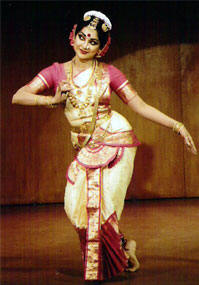
Tamil Nadu has a long tradition of venerable culture. Unique cultural features like Bharatanatyam, Tanjore painting, and Tamil architecture were developed and practised in Tamil Nadu. Chola kings conquered lands as far north as the Ganges, and as far east as Malaysia and Indonesia resulting in dissemination of Tamil culture. Tamil is the official language of Tamil Nadu and is one of the two classical languages of India, the other being Sanskrit.(as well as being one of the national languages of India). Tamil Nadu is known for its rich tradition of literature, music and dance which continue to flourish today.
Tamil is a vibrant language with a long and rich literary tradition. Most of the older works are in verse form, and prose gained popularity later. All through history, Tamil literature has sought to inform and inspire, educate and entertain. Tamil poetry has universal appeal as evinced by many examples.
Tirukkural which was written nearly two millennia ago portrays a universal outlook. This is evident by the author, Thiruvalluvar who had not mentioned his religion, land, and the audience of his work. He is portrayed as holy saint of Tamil Nadu today and even for the generations to come. There is an evidential history that the kings of olden days rolled out Tamil Sangam (Tamil organisation) to develop literature works in Tamil. The Sangam headquartered in Madurai generated lot a notable literary works. First Tamil printing press was established at Tarangambadi by the Danish missionaries.
In 20th century during the freedom struggle, many Tamil poets and writers provoked national spirit, social equity, secularist thoughts among the common man, notably, Subramanya Bharathy. Even today, Tamil Nadu hosts creative writers like Jayakanthan, Jayamohan, Sujatha, Indira Parthasarathy, etc.
Music in Tamil Nadu had different forms across the people. In villages where farming was a major work, the ladies who work in the fields used to sing kulavai songs. Odhuvars, Sthanikars, or Kattalaiyars offer short musical programmes in the temples by singing the devotional Thevaram songs. In sharp contrast with the restrained and intellectual nature of carnatic music, Tamil folk music tends to be much more exuberant. Popular forms of Tamil folk music include the VilluppÄttu, a form of music performed with a bow, and the NÄttuppur̲appÄttu, ballads that convey folklore and folk history. Some of the leading Tamil folk artists in the early 21st century are Pushpuvanam Kuppuswamy, Dr Navaneethakrishnan, Chinnaponnu, Paravai muniammal etc.
Carnatic music is the classical music of Southern India. The basic form is a monophonic song with improvised variations. There are 72 basic scales on the octave, and a rich variety of melodic motion. Both melodic and rhythmic structures are varied and compelling. This is one of the world's oldest & richest musical traditions. Carnatic music abounds in structured compositions in the different ragas. These are songs composed by great artists and handed down through generations of disciples. Three saint composers of the nineteenth century, Tyagaraja, Muthuswami Dikshitar and Shyama Shastri, have composed thousands of songs that remain favourites among musicians and audiences. The composers belonging to the Tamil Trinity of Muthu Thandavar (?1560 - ?1640 CE), Arunachala Kavi (1712-1779) and Marimutthu Pillai (1717-1787) composed hundreds of devotional songs in Tamil and helped in the evolution of Carnatic music. Today, Tamil Nadu has hundreds of notable carnatic singers who spread this music all over the world. M. S. Subbulakshmi, a renowned carnatic singer, had the honour of singing a song in the UN Security Council.
In terms of modern music (light, film, pop, etc.), the music of Tamil Nadu is praised very highly. Ilaiyaraaja was the most prominent composer of film music in Tamil cinema during the late 1970s and 1980s. His work highlighted Tamil folk lyricism and introduced broader Western musical sensibilities to the South Indian musical mainstream. Tamil Nadu is also the home of A.R. Rahman, one of the greatest Indian musicians and composers, who is recognised worldwide.
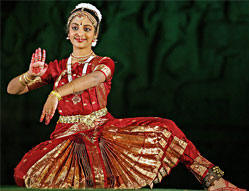
Tamils have a large number of folk dances. These are performed for every possible occasion, to celebrate the arrival of seasons, birth of a child, a wedding and festivals. Tamil dance is closely intertwined with the Tamil theatrical tradition. The most celebrated of these is karakattam. In its religious form, the dance is performed in front of an image of the goddess Mariamman. The dancer bears on his or her head a brass pot filled with uncooked rice, decorated with flowers and surrounded by a bamboo frame, and tumbles and leaps to the rhythm of a song without spilling a grain. Karakattam is usually performed to a special type of song known as temmanguppÄttu or thevar pÄttu, a folk song in the mode of a lover speaking to his beloved, to the accompaniment of a nadaswaram and melam. Other Tamil folk dances include mayilÄttam, where the dancers tie a string of peacock feathers around their waist; ÅyilÄttam, danced in a circle while waving small pieces of cloth of various colours; poykkÄl kuthiraiyaattam, where the dancers use dummy horses; mÄnÄttam, where the dancers imitate the graceful leaping of deer; paraiyÄttam, a dance to the sound of rhythmical drumbeats, and thÄ«ppandÄttam, a dance involving playing with burning wooden torches.
Bharatanatyam is a classical dance form originating from Tamil Nadu. Bharatanatyam is thought to have been created by Bharata Muni, a Hindu sage, who wrote the Natya Shastra, the most important ancient treatise on classical Indian dance. In ancient times it was performed as dasiattam by mandir (Hindu temple) Devadasis. In this form, it as also been called "sadir" or "chinna melam". Many of the ancient sculptures in Hindu temples are based on Bharata Natyam dance postures. Bharatanatyam is a traditional dance-form known for its grace, purity, tenderness, and sculpturesque poses. Today, it is one of the most popular and widely performed dance styles and is practised by male and female dancers all over India. Therukoothhu is a folk tradition of dance-drama. Therukoothhu literally means 'street dance'.
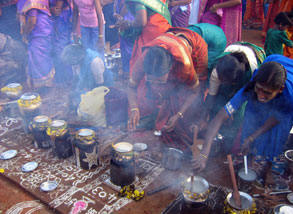
Pongal, also called as Tamizhar Thirunaal (festival of Tamils) is a four-day harvest festival and is the most celebrated festival of Tamil Nadu. The Tamil language saying Thai Pirandhal Vazhi Pirakkum -- literally meaning, the birth of the month of Thai will pave way for new opportunities -- is often quoted with reference to the Pongal festival. The first day, Bhogi Pongal, is celebrated by throwing away and destroying old clothes and materials by setting them on fire to mark the end of the old and emergence of the new. The second day, Surya Pongal, is the main day which falls on the first day of the Tamil month Thai (January 14 or January 15 in western calendar). The third day, Maattu Pongal, is meant to offer thanks to the cattle, as they provide milk and are used to plough the lands. Jallikattu, a violent taming the wild bull contest, marks the main event of this day. During this final day, Kaanum Pongal — the word "kanum", literally meaning 'to view' — youths used to gather at river banks to view and select their future life partners, but that practice has declined.
The first month in the Tamil calendar is Chittirai and the first day of this month is celebrated as Tamil New Year, which generally falls on the April 14 or 13 of the Gregorian calendar. Aadi Perukku is celebrated on the 18th day of the Tamil month 'aadi', which is basically intended to celebrate the raising of water level in river Cauvery. Apart from these major festivals, in every village and town of Tamil Nadu people celebrate festivals for the local gods once in a year and the time differs from place to place. Most of these festivals are related to the goddess Maariyamman, the mother goddess of rain.
National festivals like Saraswathi Poojai (Dasara) and Vinayaka Chathurthi and the most famous Diwali are celebrated widely. The Ayyavazhi Festival, Ayya Vaikunda Avataram is celebrated grandly in the southern districts,[11] especially in Swamithope pathi,[12] the religious head quarters.[13] In addition the Velankanni Church and the Nagore mosque stand testimony to the multi-religious nature of the state.
Tamil Nadu is a land of varied beauty. It is mostly famous for its numerous Hindu temples based on the Dravidian architecture. The temples are of a distinct style which is famous for its towering Gopuram. Popular temple towns include Madurai, Trichy, Tanjore, Kanchipuram, Swamithoppe, Palani, Tiruvallur and Mahabalipuram. Kanyakumari, the southern most tip of peninsular India, is famous for its distinct and beautiful sunrise, Vivekananda Rock Memorial on the mid-sea, Thiruvalluvar statue and has some very green hilly landscape and beautiful scenery and tourist attractions around the district.
Hill stations like Kodaikanal, Nilgiris and Yercaud boast some of the stunning landscapes in India. The Mudumalai Wildlife Sanctuary located in Gudalur near the border of Karnataka known for its elephants, tigers and deer and the Pitchavaram Mangrove forests located in Chidambaram are two of the many eco-tourism spots of importance.
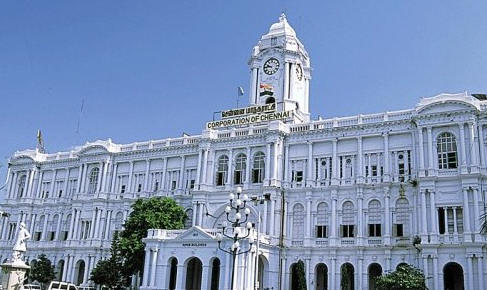
Tamil Nadu has a great tradition of history and culture. In ancient, early medieval and medieval period, a number of dynasties ruled over the Tamil land. Many of those rulers were very fond of art and architecture and gave generous patronage to men of letters, sculptors, architects and artists. This saw the Tamil land becoming a hub of many beautiful and amazing monuments, which attract tourists from all over the world to this day. These monuments speak volumes about the artistic skills and excellence of the sculptors and architects of that period. The temples with their towering gopurams and the rock cut temples leave the connoisseurs speechless.
As a result of such great cultural achievements, the state of Tamil Nadu is referred to as the cradle of Dravidian culture, an ancient culture distinguished by unique languages and customs. Many towns and cities of Tamilnadu are associated with beautiful monuments. Mahabalipuram is one of those places, which boast of numerous architectural wonders. The famous Arjuna's Penance is one such monument at Mahabalipuram. Chennai, the capital city, is home to may monuments such as the Kamaraj Memorial House, Bharathiyar Illam, Madras War Cemetery, Rippon Building, Vivekananda Illam and the Valluvar Kottam while Madurai boasts of Thirumalai Nayak Mahal, a classic example of Indo-Saracenic style. The Rock Fort temple is a prominent landmark in Tiruchirappalli.
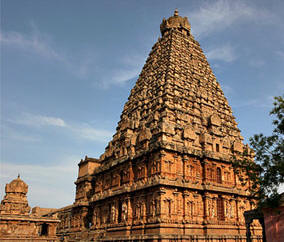
The temple architecture in Tamilnadu grew with innovation and experiments. The rule of the Pallavas, Pandyas, Cholas, Vijayanagar rulers and the Nayakas saw the construction of a number of magnificent temples. Thousands of temples, with rising towers that touch the skyline of Tamil Nadu, were constructed during the reign of the above-mentioned empires. These temples demonstrate that the Tamils have been the most innovative temple builders. This fact is very well evident in the temples from the pre Christian era as well as those from the 20th century. The spectacular architecture of these temples inspires awe and amazes the onlookers.
Most of the ancient temples of Tamilnadu were constructed in brick and mortar. However, by the 7th century AD a unique style of temple construction emerged when temples were hewn out of caves. The rule of the Pallavas saw (up to 900 AD) building of temples of stone. The Cholas (900 -1250 AD) were great temple builders and they have a number of magnificent and spectacular to their credit. The Brihadeeswarar temple in Thanjavur, built by Raj Raja I, is a tribute to the Chola rulers. The Chola rulers added many ornate mandpams (halls) to temples and built large gopurams (towers). Subsequently, the Pandya Style (Up to 1350 AD) saw the emergence of the temple architecture with huge towers, high wall enclosures and massive gateways. The Vijayanagar rulers also made significant contribution to the temple architecture. They are known more for the intricacy and decorated monolithic pillars.
As you travel across the state of Tamilnadu, you will be awestruck and amazed to see the intricately carved designs and the splendid architecture of the temples spread over the length and breadth of the Tamil land.
Airavatheeswara Temple
The temple architecture reached its zenith during the rule of the Chola rulers. Thanjavur, being the capital of the Chola rulers, witnessed most of the architectural activities.
Brihadeswara Temple
The Brihadeswara temple is one of the most ancient and the most celebrated Hindu temple in the world. The temple is located in the city of Thanjavur that is also known as Tanjore, in the Indian province of Tamilnadu.
Kailasanath Temple
Kanchipuram is a pilgrimage city. A former Pallava capital (7th - 9th century), Kanchipuram is filled with temples dating from the 8th - 17th centuries.
Kanyakumari Temple
Kanyakumari forms the southern most end of mainland India. It is also the place where the Arabian Sea, the Bay of Bengal and the Indian Ocean merge.
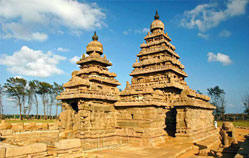
Mahabalipuram Rathas
Mahabalipuram is a temple town that is situated along the Coromandel Coast 55 kilometers off Chennai, the capital of Tamilnadu. The place is famous for its Ratha temples that are a part of the famous shore temple complex.
Meenakshi Temple
The Meenakshi temple complex is one of the largest in India. The presiding deity at the Meenakshi temple at Madurai, the Athens of South India, is Goddess Meenakshi. The nucleus of the temple is older than the Madurai city.
Murugan Temple
The Murugan temple at Tirupporur is one of the major temples dedicated to Lord Muruga in Tamilnadu. The Murugan temple is situated at a distance of about 45 Km from Chennai.
Rameshwaram Temple
The Ramanathaswamy Temple is one of the most sacred shrines of the Hindus in India. The Jyotirlingam at the Ramanathaswamy temple is the southernmost of the 12 Jyotirlingams of India.
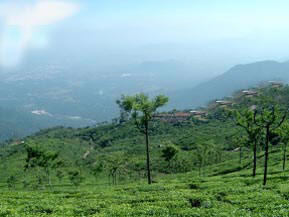
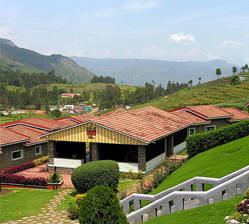
Kodaikanal:
Situated at an altitude of more than 6854 ft above sea level, Kodaikana is located on the southern tip of the upper Palani Hills 120 km northwest of Madurai. A typical hill station, Kodaikanal offers you boat rides, nature walks, hiking, trekking and rock-climbing. The delectable taste of homemade chocolate and cheese is a specialty of Kodaikanal, also referred to as Kodai. Surrounded by thick Shola Forests and scenic greenery, Kodi leads to some of the South India's best trekking terrain. A favorite among the honeymooners, the highlight of the city is a centrally located star-shaped lake.
Nilgiri Hills:
'Nilgiris' or 'Blue Mountains' rise to an altitude of 2,280 m to 2,290 m above sea level. Situated at the confluence of the Western and the Eastern Ghats known as the Sahayadri Hills, Nilgiris offers some of the most panoramic views of Deccan India. Some of the most well-known highlights of Nilgiris are Udhagamandalam or Ooty, Coonoor, Kotagiri, Doddabetta peak, Mudumalai Wildlife Sanctuary, 180-ft high Laws Falls, Dolphin's Nose, a unique rock of tremendous proportions jutting out of the face of the hillside, Catherine falls, Kodanad Viewpoint, which offers panoramic view of the plains and the eastern slopes of the Nilgiris, Mukkurthi Peak and National Park and Pykara known for well-protected fenced sholas, Toda settlements, undisturbed grassy meadows and a good wildlife habitat along with Pykara Dam, Pykara falls and the reservoir.
Ooty:
The haven for adventure tourists, Ooty offers a number of facilities for adventure sports such as trekking, hiking, rock-climbing and hand gliding. Often referred to as 'the Queen of Hill Stations', Udhagamandalam or Ooty is situated in the lap of the Nilgiri ranges. At an altitude of 2290 m above sea level, it is just 105 km away from Coimbatore and has a salubrious climate. A blue misty haze envelops the range, giving it a divine look. Wildlife enthusiasts would certainly enjoy the trip to the sprawling Mudumalai Sanctuary nearby. Amateurs may choose to join hang-gliding courses at Ooty that are organized every year from March to May along with fishing camps. One needs license for fishing and angling in the various streams and lakes of Ooty and the main catch are usually Goad Trouts, Carps and mixed water fishes.
Yercaud:
Situated at an altitude of 4,920 ft above sea level, Yercaud is not as popular as Ooty and Kodaikanal. Nestled amongst the Shevaroy hills of the Eastern Ghats, the extraordinarily beautiful hill resort is blessed with natural beauty and a salubrious climate. Also known as the 'Ooty of the Poor', it is much quieter and cheaper than its more popular hill mate. The aromatic coffee plantations and orange groves make it even more desirable to those who are looking for the places where they can get rid of the din of the daily lives and want a break from the strenuous city lifestyle. The highest point in Yercaud is Shevaroy temple, situated at a height of 5,326 ft above sea level.
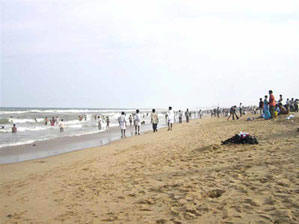
Lies on the Southern Peninsular India. It has a long stretch of beach running over 900 kms. The coromandel coast, abutting the Bay of Bengal, boasts of many ideal locations for sun and surf. where... Golden sands are dotted with palm and casuarina groves. Ruffling washes ashore pebbles and surf. Gentle breeze sways the yachts the sea and forms small dunes on the beach, Crabs play hide and seek coming out of one burrow, taking refuge in another. Sea gulls hover on the sky and then rest on the sails. There are many more breathtaking sights to please you in Tamil Nadu.
Pulicat Beaches
A saline shallow water spread formed by the confluence of Backwaters, Pullcat Lake and Buckingham Canal situated on the northern end of Tamil Nadu is an ideal picnic spot.
Chennai Beaches
One of the Four Metros of the country, is also the Gateway to the South. It is bestowed with a 4.5 Kms. long stretch of Beach, the second longest in the World, called the Marina Beach.
Dakhinachitra Beaches
This is a new venture to show South Indian heritage. Take a look at the completed first phase of Tamilian heritage.
Muttukkadu Beaches
Yet another beach resort created in memory of erstwhile "Kaveripoompattinam", a legendary Port city, washed away by the sea.
Covelong Beaches
40 Kms away from the hustle and bustle of Chennai, Covelong is a salubrious village.
Themeparks Beaches
Along the East Coast road between Chennai and Mamallapuram, several amusement parks, enthrall children and adults alike.
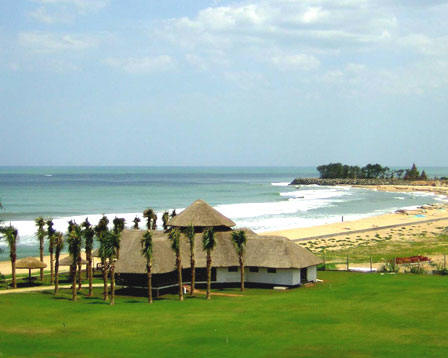
Mammallapuram Beaches
58 Kms from Chennai, Once a port and the second capital of the Pallava Dynasty, Mamallapuram flourished during 7- 8th centuries. The monuments of Pallava, the proto type of the Dravidian Temple Architecture, lure every visitor to this town.
Sadurangapatinam Beaches
This is another fishing village, 16 Kms south of Mamallapuram. A ruined fort of Dutch origin near the beach houses tomb stones dating back to 16-17th century. If you are heading further down south.
Poompuhar Beaches
Yet another beach resort created in memory of erstwhile "Kaveripoompattinam", a legendary Port city, washed away by the sea.
Tharangambadi Beaches
Another Sea side village, where the Danish merchants settled for trade. What they left are the Legacies of the Danes.
Nagore Beaches
though religious centre for muslims, the Durga of Hazarat meeras sultan syed shahabdul hameed popularly known as Hazarat.
Velankanni Beaches
The most popular pilgrim centre for Catholic Christians of Tamil Nadu Velankanni houses, the Church of our Lady of Health. This shrine is also visited by people of all faiths.
Kodikkarai Beaches
Also called Point Calimere, the Wild Life Sanctuary here spreads 333.3 Sq Kms with 25 Kms of tropical dry evergreen forests. It is bounded by Bay of Bengal on the East and Palk Straits on the South. It is situated South of Velankanni.
Rameswaram Beaches
An island off the mainland surrounded by Palk Strait and the Gulf of Mannar connected by the longest ever constructed^ bridge on sea in India. It is a pilgrim centre.
Mandapam Beaches
Mandapam is the main land linking the Island of Rameswaram. It is the Gateway to many small islands.
Kurusadai Islands
This is an ecological paradise situated off Mandapam. It is notable for coral reefs and rare species of marine lives such as Dolphins.
Tuticorin Beaches
A Port city and an Industrial town. Tuticorin is one of the major ports of Tamil Nadu. Pearl Harvesting is an important activity here.

Triuchendur Beaches
One of the six abodes of Lord Muruga, a Saivite God, Tiruchendur is a very popular pilgrim centre.
Kanniyakumari Beaches
The India's Land's end KanyaKuman or Cape Comorin is unique in being surrounded by three s that is Bay of Bengal, Indian Ocean, and Arabian S Hence the confluence is called 'Thriveni Sangamam".
Vattakotai Beaches
The circular serene for is situated 6 kms from Kanniyakumari, overlooking the sea. It is a fine picnic spot, with abundant coconut trees.
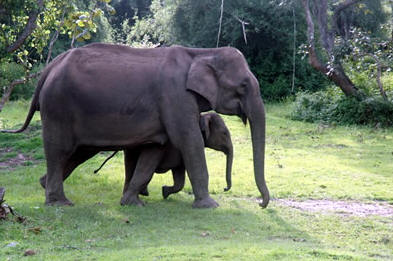
The topography of Tamil Nadu is delightfully varied and diverse. Of the 1,30,058 sq-kms land area, 17.6% is covered with forest area. These spread over the plains and on mountain slopes. Dry lands are bestowed with dry-deciduous forests, thorn forests, scrubs and mangroves. The Western Ghats and a few cooler regions are endowed with moist deciduous, wet evergreen forests and grasslands. There are 5 national parks and 17 wildlife sanctuaries in Tamil Nadu. The famous wildlife sanctuaries are the Anamalai (Indira Gandhi) Wildlife Sanctuary, Calimere Wildlife Sanctuary, Kalakadu Wildlife Sanctuary, Mundanthurai Tiger Sanctuary, Kunthakulam Bird Sanctuary, Mudumalai Wildlife Sanctuary and National Park, Vedanthangal Bird Sanctuary and The Viralimalai Sanctuary. The Gulf of Mannar Marine National Park and the Guindy National Park are the most visited national parks in the state. Anna Zoological Park in Chennai is one of the latest and modern zoos of India. The Snake Park and the Crocodile Bank also located in Chennai are known for their collection of reptiles.
Get Best Deals Directly in Your Inbox Today !
You will get notification for every deal as it appears
